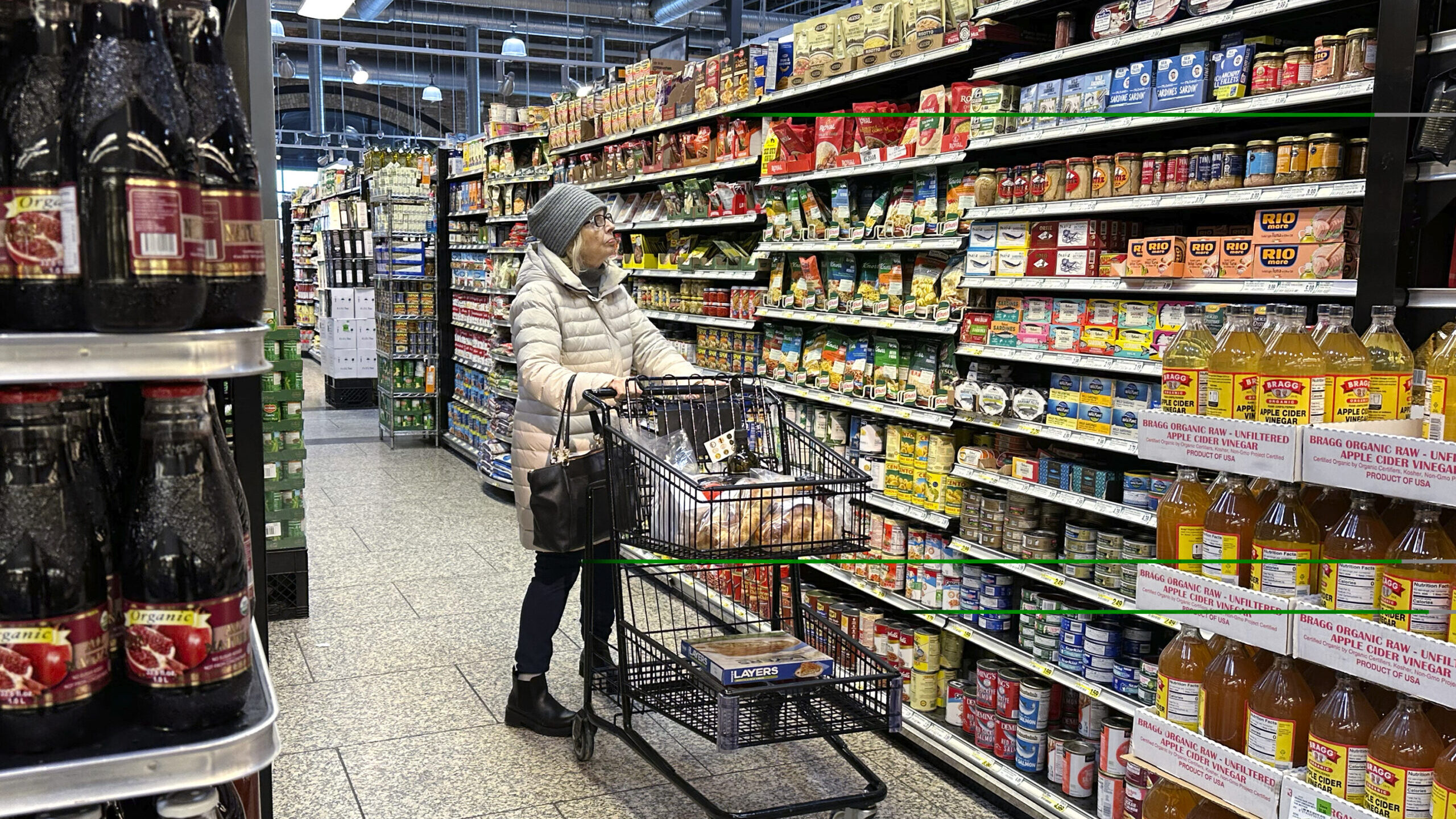SALT LAKE CITY — U.S. consumers were given a bit of relief at the cash register last month as inflation dipped slightly. But shoppers in Utah are still feeling the bite of higher prices on grocery store shelves.
The price for consumer goods and services rose 0.3% in April on a seasonally adjusted basis after rising 0.4% in each of the three preceding months, according to the Consumer Price Index.
Investors are hoping the Federal Reserve lowers interest rates as soon as September after the three major stock indexes hit record highs on news Wednesday from the CPI that inflation cooled slightly in April.
According to MarketWatch:
- The Dow Jones finished up by 349 points, or 0.9%, at 39,908, based on preliminary data.
- The S&P 500 closed up 61 points, or 1.2%, at 5,308,15.
- The Nasdaq Composite ended up 231 points, or 1.4%, at 16,742.
Meanwhile in Utah
A wife, mother and substitute teacher from West Valley, Tina Hermansen knows food prices must fall even further.
“I get anxious going to the grocery store because of how much I’m spending,” she said.
Her family of six has one child still at home, but her other children often visit to eat. She said she spends between $800 and $1,000 on groceries, every month.
“That money doesn’t go as far as it used to,” Hermansen told KSL.com.
Inside Sources: Subsidies keeping inflation high
Scott Linicome of the Cato Institute tells Boyd Matheson, host of Inside Sources, that there are ways to combat inflation in our food prices. He said it takes changing the common thinking. It also takes changing the way things are done in Washington, D.C. We’ve included a portion of the transcript below.
The transcript has been edited for brevity.
Boyd Matheson: Ever since the pandemic in 2020 [and] subsequent efforts to boost economic recovery, the world’s experienced rates of inflation that we hadn’t seen for a long time. And of course that has impacted households, budgets [and] what we talked about around the kitchen table all across the country. When it comes to putting food on that table, that’s often the challenge.
Now, we’ve heard some of the economics around all of this in terms of government spending and where prices are set and so on. Today we want to get underneath those headlines just a little bit and explore an area [and] even some sacred cows that might be contributing to those high prices. Let’s begin.
It’s easy to get locked in to interest rates where they are, how much government spending is compounding that, but there are other factors that are underneath the headlines that we need to really think through.
I love this piece in the Dispatch talking about political sacred cows that actually contribute to that inflation and how much we’re paying at the grocery store.
Scott Linicome, is vice president of general economics and trade at the Cato Institute. He gets beyond the headlines, and he’s done a great deep dive on this.
You’re asking about some of the other things impacting what we’re paying at the grocery store.
Scott Linicome: We always need to start out by saying a lot of global food price inflation, here and abroad, really deals with things like the weather and monetary policy. Things that are out of our control.
There are policy levers in the United States that might not affect the trend in food prices. But (they) can give us some relief when we go to the supermarket.
When you dig into these things a bit, you find that many policies in Washington are keeping food prices high. They are sacred cows — no pun intended. And a lot of them relate to good old protectionism (or taxing imports.)
We have tariff and non-tariff barriers and other regulatory restrictions on imports of food. These inevitably increase the prices Americans are going to pay.
Inside Sources with Boyd Matheson can be heard weekdays from 1 p.m. to 3 p.m. on KSL NewsRadio. Users can find the show on the KSL NewsRadio website and app.

